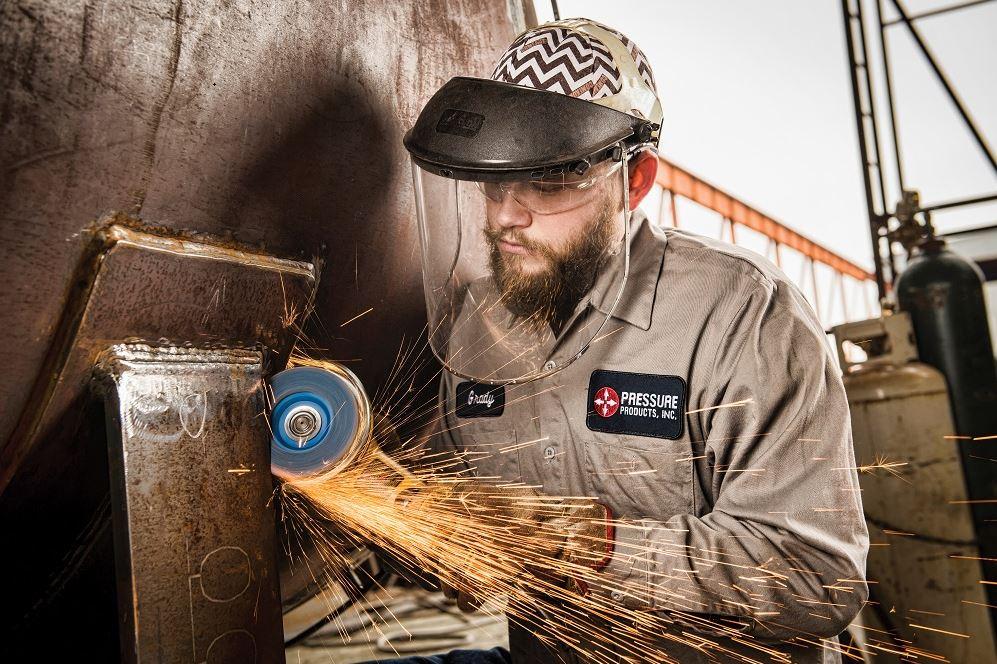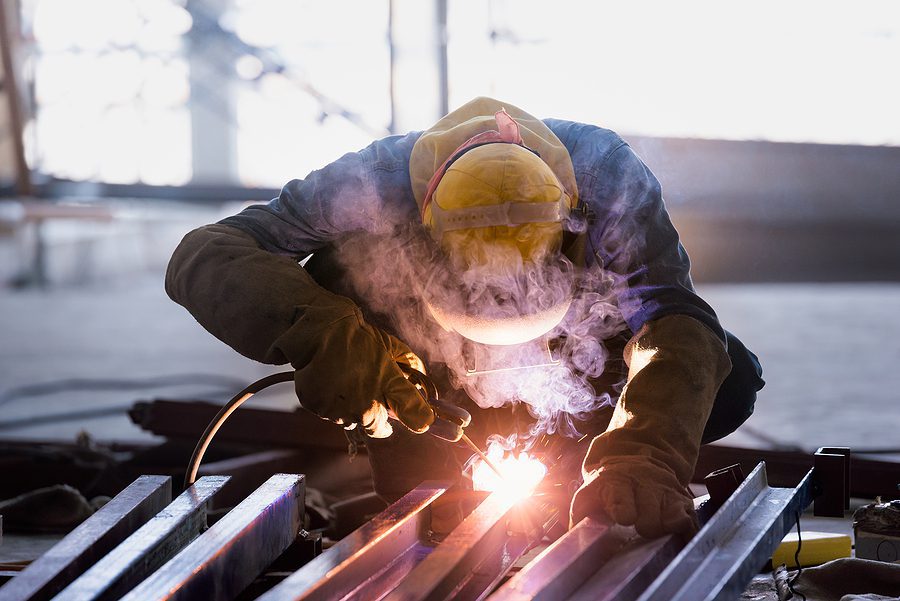Common Welding Repair Issues and Exactly How to Address Them Successfully
Welding repairs frequently encounter an array of concerns that can endanger the stability of the last product. Typical troubles include inadequate penetration, porosity, and imbalance, among others. Each flaw presents unique obstacles that call for certain strategies for resolution. Understanding these concerns is crucial for welders intending to improve their outcomes and skills. This discussion will certainly discover these usual welding repair work problems and reliable approaches to address them.
Inadequate Penetration
Poor penetration occurs when the weld steel fails to totally fuse with the base material, leading to weak joints and potential structural failures. This issue usually originates from insufficient heat input, inaccurate electrode angle, or incorrect welding rate. Welders may run into insufficient infiltration as a result of a mistake of the essential criteria for a certain material density or type. In addition, contamination on the base material's surface area can hinder effective bonding, intensifying the issue. To resolve insufficient infiltration, welders need to guarantee appropriate settings on their equipment and preserve a clean work surface. Routine examination of welds is advised to determine any kind of deficiencies early, enabling prompt adjustments and the prevention of endangered structural stability in bonded assemblies.
Porosity
Porosity is a common flaw in welded joints that manifests as small gas bubbles trapped within the weld metal. This issue can compromise the integrity of the weld, bring about minimized stamina and potential failure under anxiety. Welding. Porosity typically arises from contamination, wetness, or incorrect welding strategies, which permit gases to run away right into the molten weld swimming pool. To resolve porosity, welders need to ensure proper surface area preparation, preserve a tidy working setting, and use appropriate welding specifications. In addition, picking the appropriate filler product and protecting gas can alleviate gas entrapment. Routine inspection and screening of welds can assist recognize porosity early, assuring timely corrective actions are taken, therefore maintaining the quality and reliability of the welded framework
Misalignment
Imbalance in welding can develop from various variables, including incorrect arrangement and thermal growth. Comprehending the origin is vital for effective resolution. Several improvement techniques are available to realign components and ensure structural honesty.
Root causes of Misalignment
Welding misalignment commonly originates from a selection of underlying problems that can compromise architectural stability. One main reason is incorrect fit-up of components before welding, which can cause spaces and uneven surface areas. Variants in thermal growth during the welding procedure can additionally result in distortion, specifically if the materials being signed up with have various coefficients of expansion. Additionally, poor fixturing and clamping may fail to hold components safely in position, causing movement throughout welding. Poorly maintained devices, including welding makers and tools, might present variances in the weld grain, further adding to misalignment. Lastly, operator error, stemming from insufficient training or experience, can additionally play a considerable duty in producing misaligned welds.
Adjustment Methods Readily Available
Attending to misalignment effectively calls for a mix of restorative strategies tailored to the certain concerns at hand. One typical technique is making use of jigs or fixtures to hold elements in the right placement throughout welding, making certain regular placement. In addition, pre-heating the materials can aid minimize distortion and improve fit-up. For substantial imbalance, mechanical adjustment methods, such as using hydraulic jacks or clamps, can be employed to remedy the position before welding. Post-weld warm treatment might additionally be required to ease stresses brought on by imbalance. Finally, mindful examination and change throughout the configuration stage can avoid misalignment issues from becoming significant problems, advertising a smoother welding procedure and boosting general structural integrity.
Distortion
Distortion is a typical obstacle in welding that can develop from various variables, consisting of uneven cooling and heating. Understanding the sources of distortion is necessary for executing efficient prevention methods. Resolving this issue not just improves architectural honesty yet also boosts the overall high quality of the weld.
Reasons of Distortion
When based on the extreme warmth of welding, materials usually undergo changes that can bring about distortion. This sensation primarily arises from thermal expansion and tightening throughout the welding procedure. As the weld area heats up, the product broadens; upon cooling, it contracts, which can develop inner anxieties. On top of that, uneven home heating across a work surface can intensify these anxieties, resulting in bending or bending. The sort of material also plays a significant duty; metals with varying thermal conductivity and coefficients of expansion may respond in a different way, leading to uncertain distortions. Inadequate joint design and insufficient fixturing can add to imbalance throughout welding, enhancing the chance of distortion. Understanding these causes is necessary for reliable welding repair work and prevention methods.
Prevention Techniques
Effective avoidance strategies for distortion during welding emphasis on regulating warmth input and ensuring correct joint layout. Keeping a regular warmth input aids to minimize thermal expansion and tightening, which can lead to distortion. Using methods such as preheating the work surface can likewise minimize the temperature level slope, advertising uniform heating. Furthermore, choosing suitable joint layouts, such as T-joints or lap joints, can enhance security and reduce anxiety focus. Carrying out appropriate fixturing to secure the work surfaces in position further aids in maintaining alignment throughout the welding process. Finally, staggered welding sequences can disperse warm extra uniformly, protecting against local distortion. By using these strategies, welders can substantially lower the probability of distortion and boost the look these up general high quality of their welds.
Fracturing
Breaking is a common issue experienced in welding repair services, commonly arising from different aspects such article as improper cooling rates, product selection, or insufficient joint preparation. The event of splits can considerably jeopardize the integrity of the weld, resulting in prospective failures throughout operation. To address this issue, welders must initially analyze the source, making sure that products work and appropriately selected for the specific application. Additionally, regulating the cooling rate during the welding process is essential; quick cooling can cause stress and anxiety and result in fracturing. Appropriate joint layout and preparation also add to reducing the risk. Executing these methods can improve weld high quality and longevity, inevitably reducing the chance of cracking in completed weldments.

Incomplete Fusion
A considerable issue in welding repairs is insufficient blend, which happens when the weld steel does not sufficiently bond with the base product or previous weld passes - Montana Mobile Welding and Repair Welding. This issue can cause weaknesses in the joint, potentially endangering the stability of the welded structure. Aspects adding to incomplete combination consist of insufficient warmth input, inappropriate welding method, and contamination of the surfaces being joined. To address this issue properly, welders need to assure correct pre-weld cleansing and surface prep work, along with adjust their welding parameters to attain adequate penetration and fusion. Regular examination throughout the welding process can also assist recognize incomplete combination early, permitting for prompt restorative measures to improve the total quality of the weld
Overheating
While welding repair services can enhance architectural integrity, overheating offers a considerable difficulty that can bring about product destruction. Too much heat during welding can alter the mechanical buildings of steels, leading to reduced strength, raised brittleness, and bending. This phenomenon is specifically important in high-stress applications where architectural integrity is extremely important. Recognizing overheating can entail aesthetic examinations for discoloration or distortion, as well as keeping track of temperature level during the welding procedure. To mitigate the dangers connected with overheating, welders need to employ suitable methods, such as controlling warmth input, readjusting travel speed, and making use of appropriate filler materials. Additionally, carrying out pre- and post-weld warmth therapies can aid restore product homes and improve the overall top quality of the fixing, making certain lasting site here performance and safety.
Often Asked Concerns
What Are the Typical Indicators of a Welding Issue?

How Can I Evaluate My Welds for Top quality?
To examine welds for quality, one can use visual assessments, ultrasonic screening, and radiographic approaches. Each strategy assures architectural honesty, identifies defects, and confirms adherence to specified standards, eventually enhancing the integrity of the bonded joints.
What Safety and security Preventative Measures Should I Take While Welding?
When welding, one ought to prioritize safety by putting on suitable personal safety devices, making sure appropriate air flow, protecting flammable materials away, maintaining a tidy office, and being conscious of environments to protect against crashes and injuries.
Can I Fix a Weld Without Redesigning the Entire Joint?
Fixing a weld without renovating the whole joint is possible, depending on the damages (Montana Mobile Welding and Repair Belgrade). Techniques such as grinding, including filler product, or utilizing a welding procedure can efficiently resolve certain defects while maintaining the surrounding framework
What Tools Are Necessary for Effective Welding Fixes?
Necessary tools for effective welding fixings include a welding machine, cable brush, grinder, safety gear, clamps, and filler materials. Each tool plays an essential function in ensuring high quality and safety and security during the repair service process. Porosity normally emerges from contamination, moisture, or incorrect welding methods, which permit gases to leave right into the liquified weld pool. Improperly kept tools, consisting of welding equipments and tools, might present disparities in the weld grain, more contributing to imbalance. When subjected to the extreme warmth of welding, materials commonly undergo changes that can lead to distortion. Fracturing is an usual concern come across in welding repairs, commonly resulting from numerous factors such as incorrect cooling rates, product selection, or insufficient joint prep work. A substantial problem in welding repair services is insufficient blend, which takes place when the weld metal does not sufficiently bond with the base material or previous weld passes.